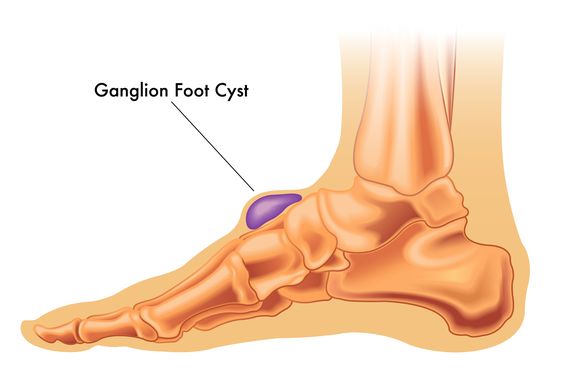Introduction
Ganglion cysts are noncancerous, fluid-filled lumps that typically develop along the tendons or joints of your wrists or hands. They can also occur in your ankles and feet. These cysts can vary in size, sometimes growing larger with increased hand activity, and may even disappear on their own.

While generally harmless, ganglion cysts can cause pain or discomfort, especially if they press on a nearby nerve. In such cases, treatment options are available to address the issue. This article will delve into the causes, symptoms, diagnosis, and treatment of ganglion cysts, equipping you with the knowledge to understand and manage this condition.
What Causes Ganglion Cysts?
The exact cause of ganglion cysts remains unknown. However, several factors may contribute to their development:
- Joint or Tendon Injury: Repetitive motions or injuries affecting the joints or tendons can increase the risk of ganglion cyst formation.
- Joint Stress: Excessive strain on a joint can trigger the development of these cysts.
- Connective Tissue Degeneration: Deterioration of the connective tissues surrounding joints can also play a role in their occurrence.
Recognizing the Symptoms
Ganglion cysts often present as a visible lump or bump. Other symptoms may include:
- Pain: Some cysts are painless, while others can cause aching, discomfort, or pain that worsens with joint movement.
- Tingling or Numbness: If a cyst presses on a nerve, it can lead to tingling sensations or numbness in the affected area.
- Weakness: Large cysts may cause weakness in the affected joint.
Diagnosis and Treatment
Doctors typically diagnose ganglion cysts through a physical examination. They may also use imaging tests like ultrasound or MRI to confirm the diagnosis and rule out other conditions. Treatment options vary depending on the severity of symptoms:
- Observation: If the cyst is painless and not causing any problems, observation may be the best course of action.
- Immobilization: A wrist brace or splint can help reduce pain and limit cyst growth.
- Aspiration: Draining the fluid from the cyst can offer temporary relief, but cysts often recur after aspiration.
- Surgery: Surgical removal is typically reserved for cysts that cause persistent pain or interfere with joint function.
If you suspect you may have a ganglion cyst, it is essential to seek medical advice for proper diagnosis and treatment.

.jpg)